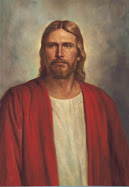Hmm. I have no idea how I know this hymn as well as I do. Words aren't memorized, but I could hum about 60% of it correctly if asked on the spot. I don't remember it from childhood. I have no memories of it in college or experience with it in my organ lessons. But somewhere I have sung/heard/played it enough to be decently familiar with it. It is an upbeat hymn with a little syncopation to keep it from getting to chord-y. The text refers to the great joy for the Gospel being restored. That which has been foretold has come, dispelling darkness. Verse 3 may be a nod to the Utah-ness, but I like to look at it, along with verse 4, as a worldwide description--that all throughout the world in desert, on sea, on mountains, etc. can raise their voices in praise for bonds being broken free.
From the history book
J. Spencer Cornwall described the hymn having "exclamatory gladness." Perfect description. Oh my word--the author Thomas Hastings is not LDS! Like the book's author (Karen Lynn Davidson) mentions, LDS often link the restoration of the Gospel with the symbol of the dawn breaking. But Thomas liked the image of the coming of day, and used it in at least two other hymns that are not in our hymnal. So now I know it is not a Utah reference and definitely about the world. The author did not think of missionary work application in the words, but we can see it! Wow--I am even more impressed with the lyrics of the hymn matching so closely to our beliefs and sentiments about the Gospel, the Restoration and missionary work. The composer was LDS, and his tune and the text first appeared in the 1889 LDS hymnal. In the current hymnal, tenor and bass parts were added to the 3rd line.




No comments:
Post a Comment